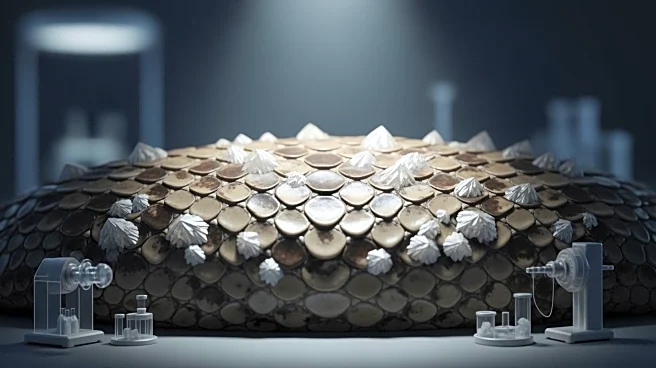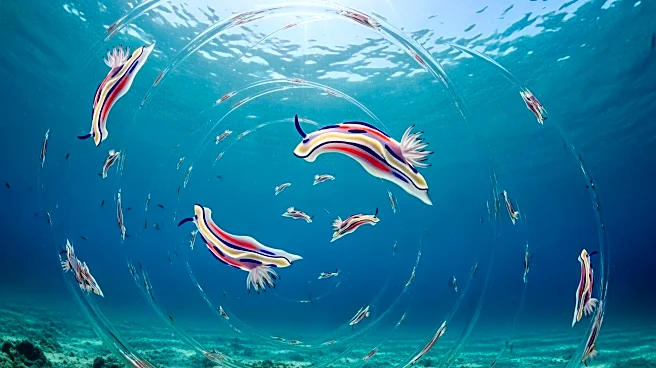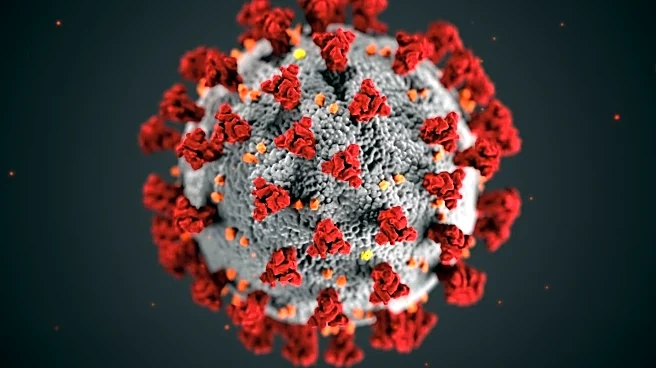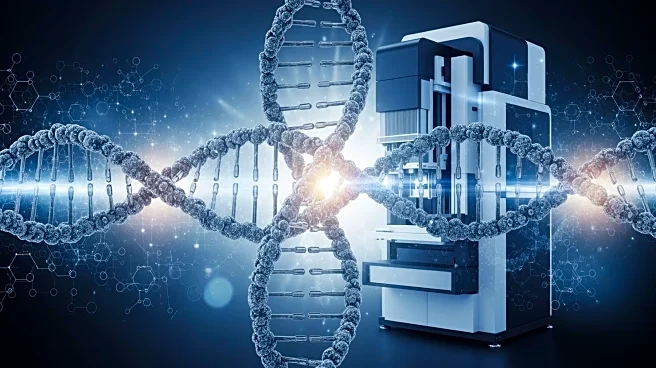What's Happening?
Researchers have discovered the evolutionary mechanism behind the formation of urine crystals in reptiles, particularly snakes. A study published in the Journal of the American Chemical Society reveals
that reptiles package excess nitrogen into tiny spheres of uric acid nanocrystals. These crystals are excreted as solid uric acid, allowing reptiles to conserve water in dry climates. The study involved analyzing urates from over 20 reptile species, uncovering a complex process where some species recycle these crystals to react with ammonia, transforming it into less toxic particles.
Why It's Important?
The findings offer insights into the evolutionary adaptations of reptiles, highlighting their ability to conserve water and manage nitrogen waste efficiently. Understanding these mechanisms could have broader implications for human health, particularly in addressing issues related to uric acid accumulation, such as gout and kidney stones. The study demonstrates the value of biomimetic approaches in solving complex biological problems, suggesting potential applications in medical research and environmental conservation. The research underscores the importance of exploring natural processes to develop innovative solutions.
What's Next?
Further research may explore the potential applications of these findings in human health, particularly in managing uric acid-related conditions. Scientists may investigate the molecular mechanisms involved in reptile nitrogen waste management, seeking ways to mimic these processes in medical treatments. The study could inspire new approaches to water conservation and waste management in arid environments, leveraging the evolutionary strategies of reptiles. Collaboration between herpetologists and medical researchers may lead to breakthroughs in understanding the role of uric acid in biology.
Beyond the Headlines
The study highlights the interconnectedness of biological systems, emphasizing the importance of interdisciplinary research in uncovering complex natural processes. The focus on reptile urine crystals may shift perspectives on waste management and conservation, encouraging innovative approaches to environmental challenges. Ethical considerations regarding the use of animal models in research may arise, prompting discussions on the balance between scientific advancement and animal welfare. The findings may also influence cultural perceptions of reptiles, fostering appreciation for their unique adaptations.











